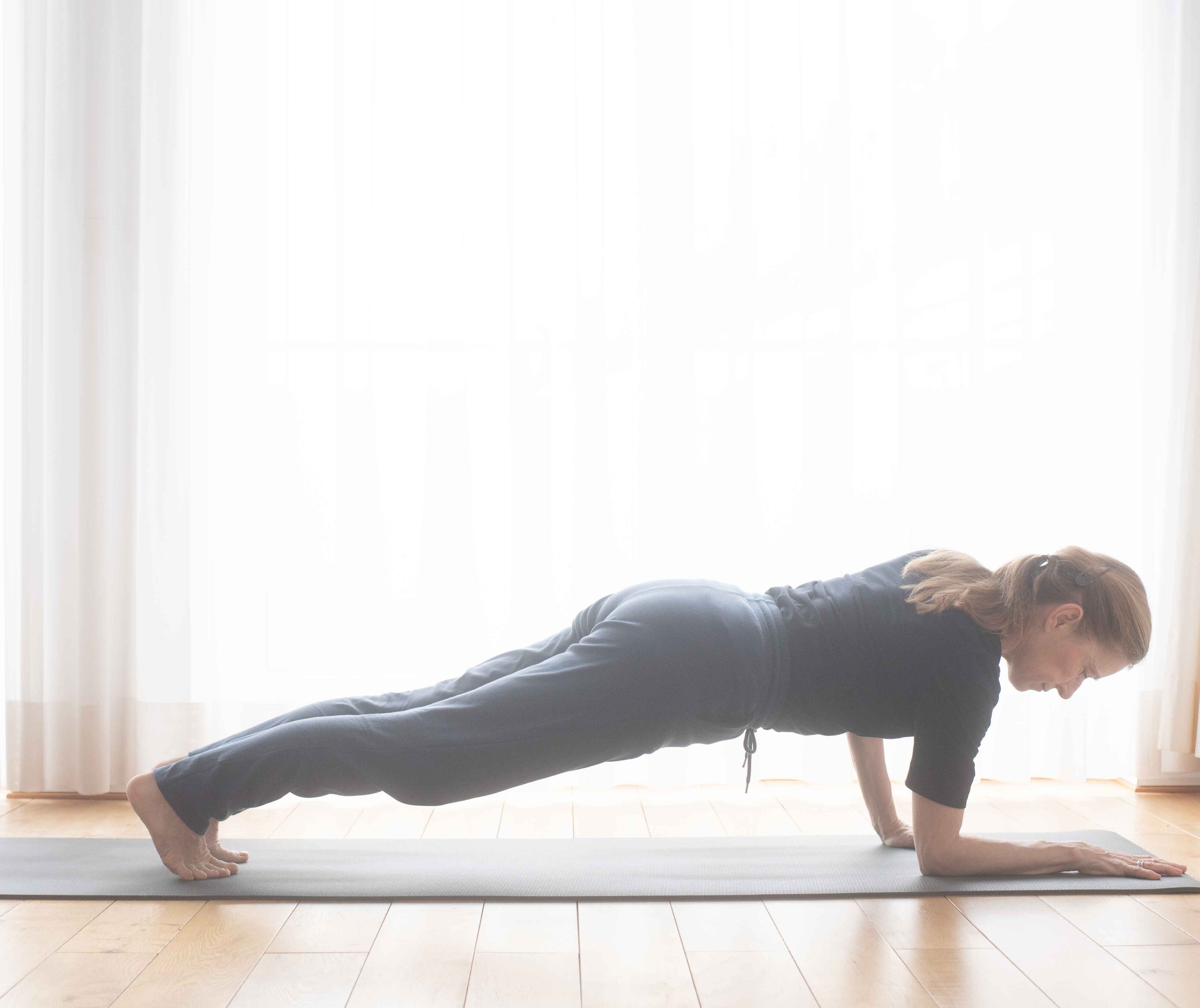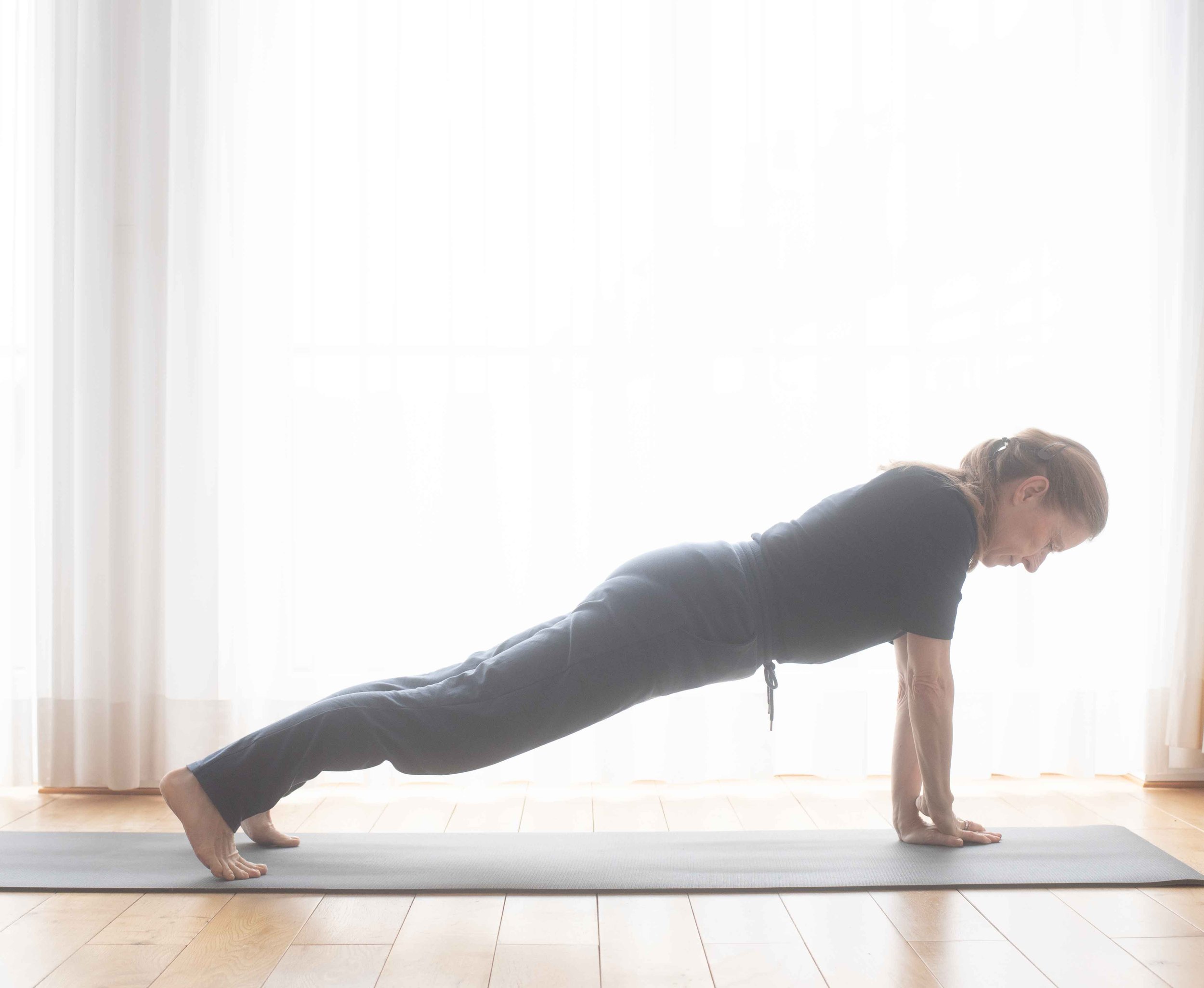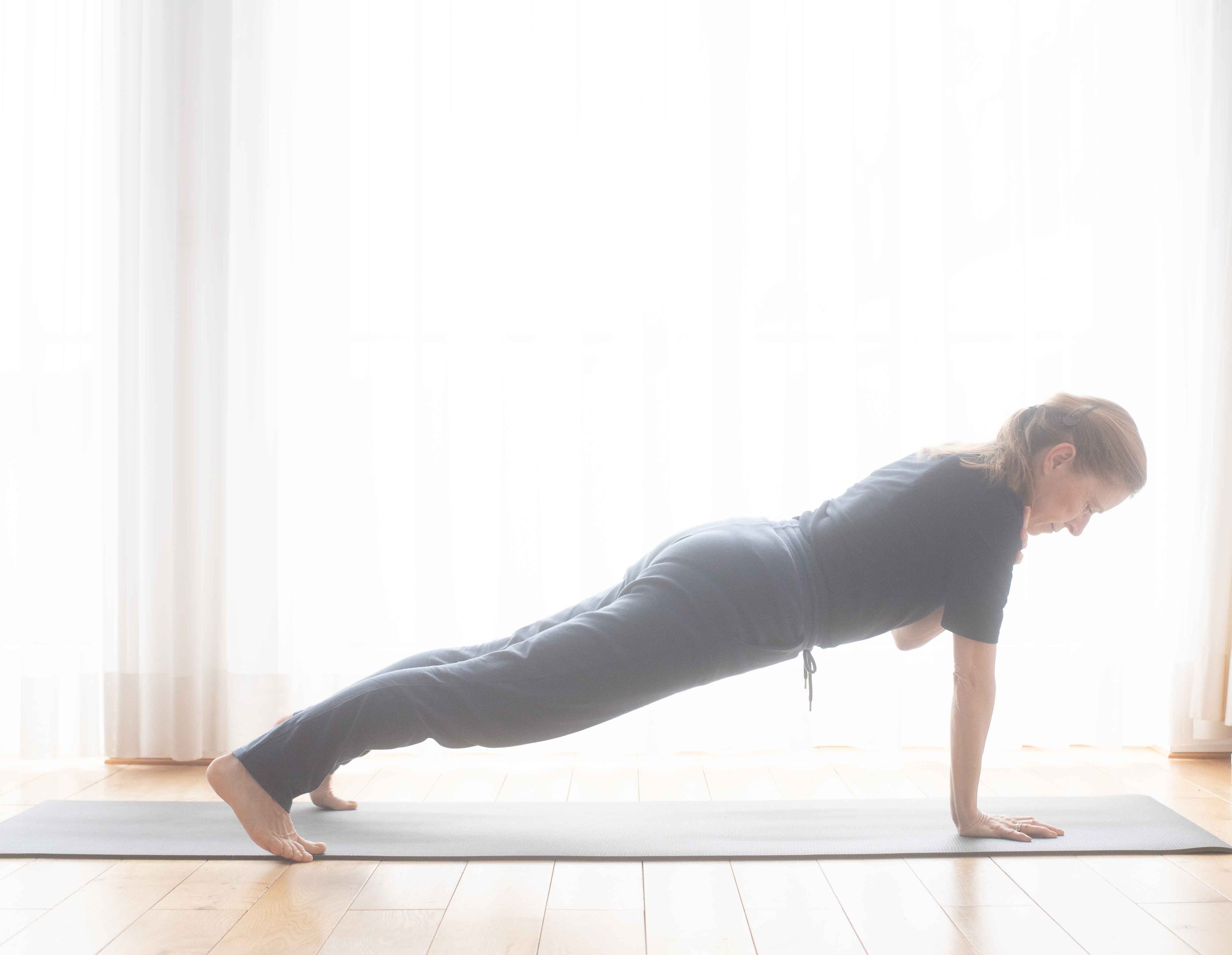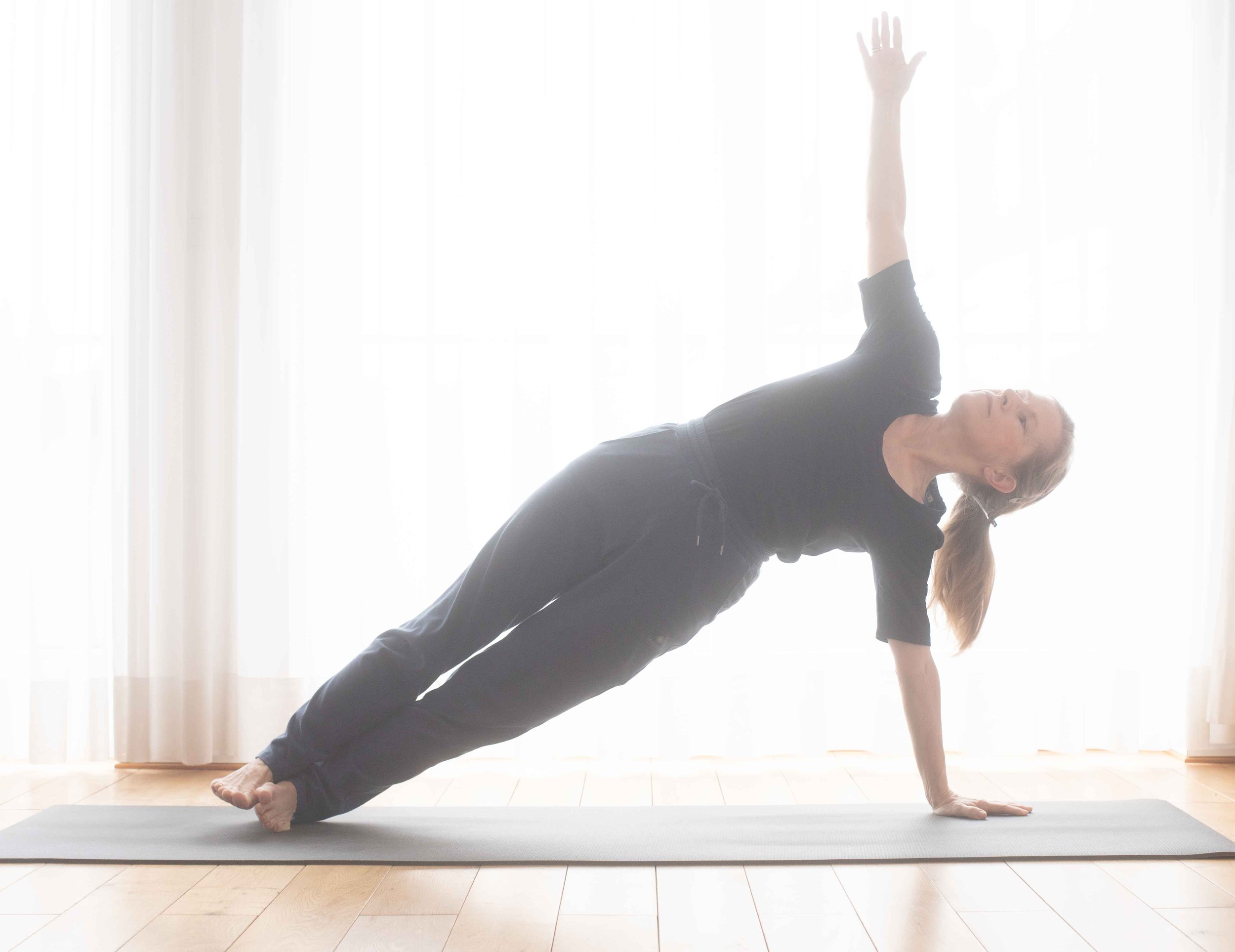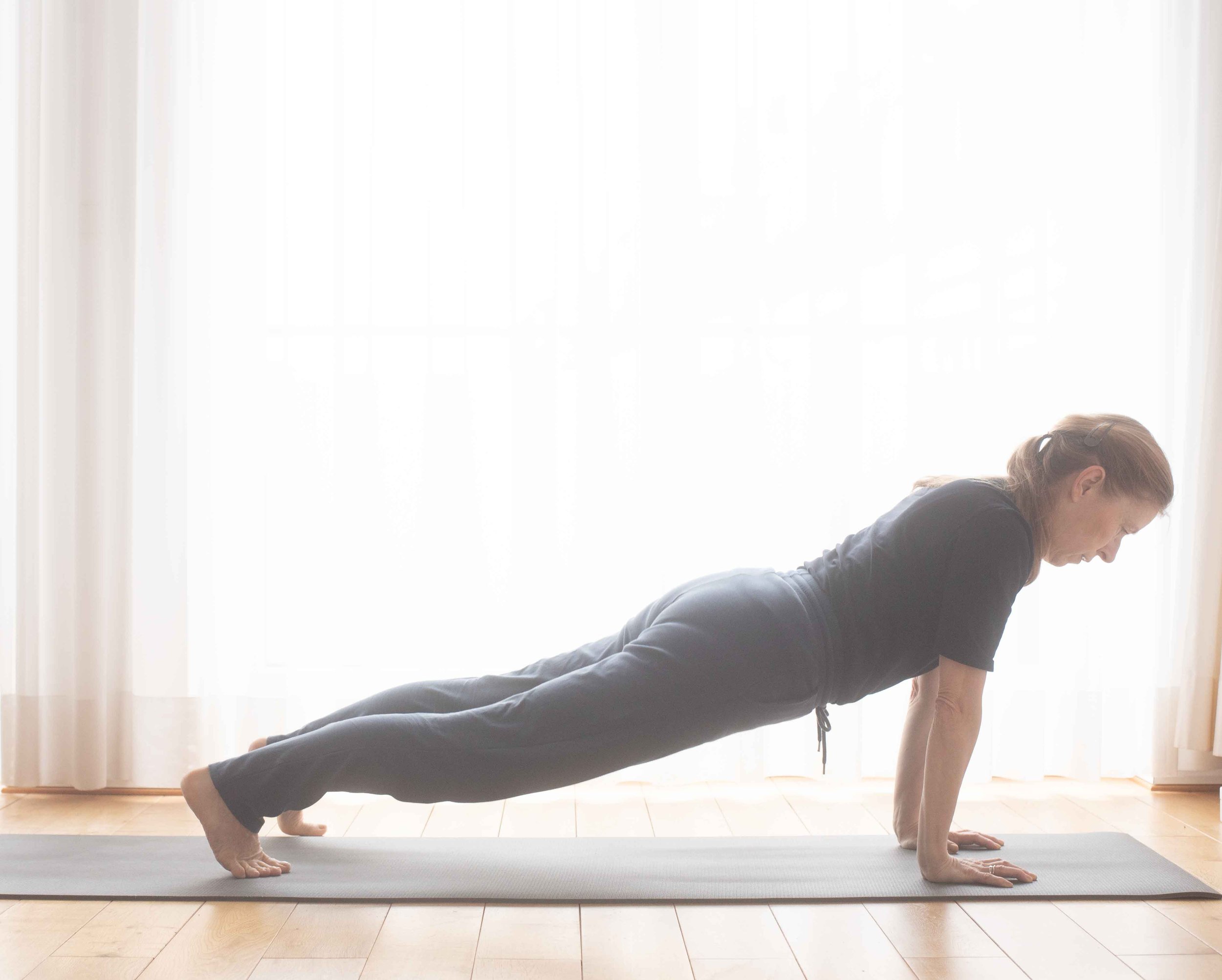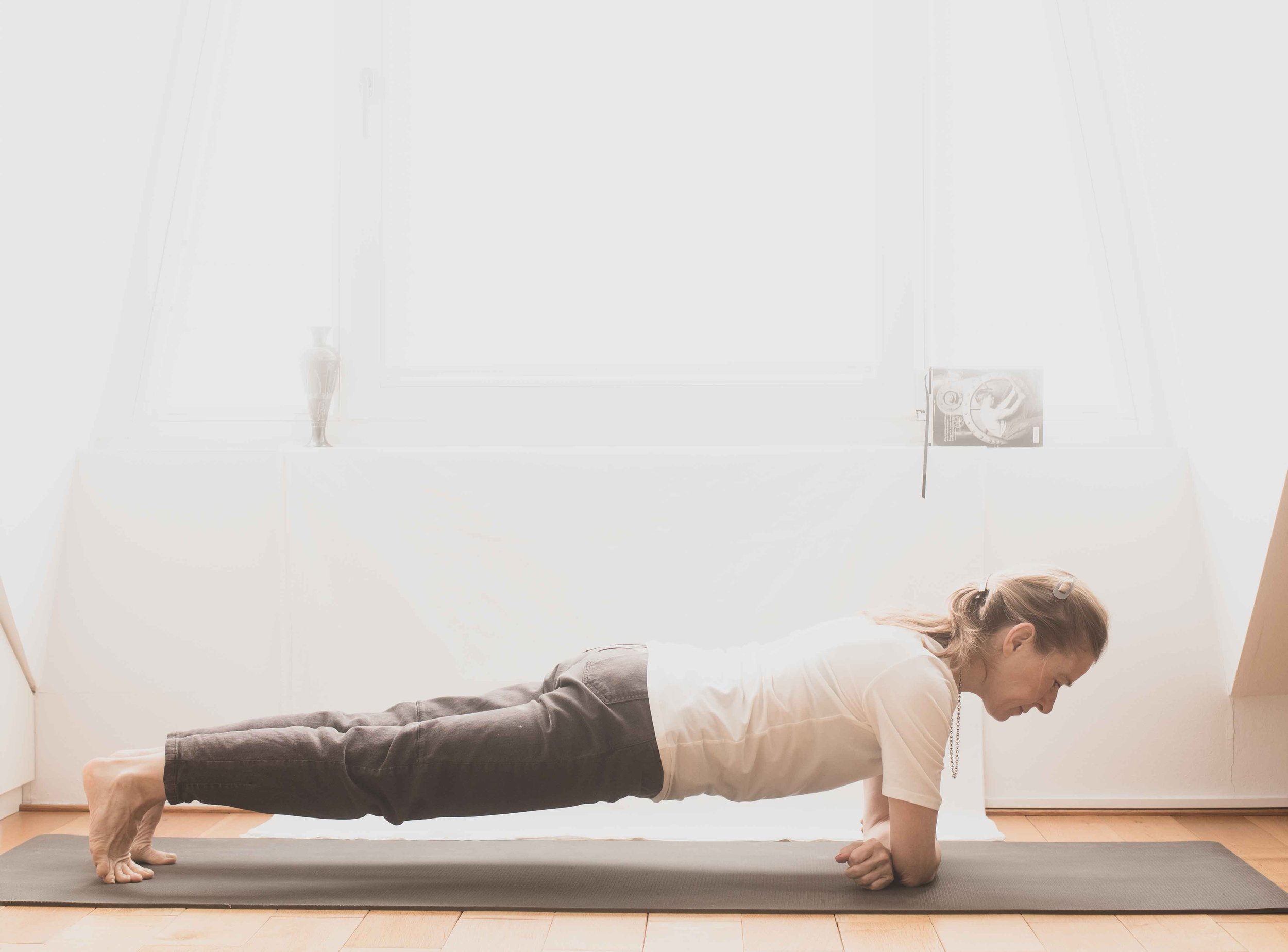Adding strength exercises to the yoga routine - planks.
Plank exercises can easily be incorporated into the sun salutations. It is a good idea to insert strength exercises before or after chaturanga dandasana.
Ultimately, chaturanga dandasana is a plank position.
The exercises are again taken from Sean Vigue's book '30 days of planks'.
In today's post, I present six more plank variations.
1st exercise:
Support yourself on your elbows. The body remains straight. Then bend your leg. Then change sides.
2nd exercise:
From a classic plank position with outstretched arms, first place the forearm of one arm on the floor, then the other. Then return to the classic position.
3rd exercise:
The hand touches the wrist of one arm. Then switch again.
4th exercise: The right hand touches the shoulder of the left side. Then switch again. This exercise was also recommended to me in the gym and becomes easier if you move your legs further apart. This makes it easier to balance.
5th exercise:
This is a side plank that I really like. It is a preparation for the 3rd Ashtanga Yoga series. The author also recommends changing sides quickly here. Since you are in a classic plank position as a transition, you can also add a push-up.
6th exercise:
One leg is moved to the side and then back again. The change follows immediately.
If you repeat the exercises up to 20 times, you will know what you have done.
These are just suggestions. It's best to pick out three favorite positions. If these get boring, try other variations.
Typical mistakes:
- When I looked at the pictures, I realized that the shoulders were not directly over the wrists. I was able to correct that.
- I also realized that my body wasn't really straight. You have to tighten your abdominal muscles to keep your body straight.
Have fun practicing.
Planks as a strength exercise
In my first blog post about planks, I described how to get into a classic incline. Ideally, the shoulders should be above the wrists. This way your arms are parallel to the wall. The wrists are not overloaded. The body is a straight inclined plank. Leg and especially the abdominal muscles are tensed.
There are many variations of this basic pose.
I got the ideas from Sean Vigue's book 'Thirty days of Planks'.
It is important to perform the positions correctly. You should also hold the postures for at least ten breaths. That's what Sean recommends. I tend to use a timer and set it to one minute.
The link is an affiliate link to Amazon. I earn a small commission with it.
The next variation is the side planks. Sean places his top foot on the floor. This makes it easier to balance. But you don't have to do this. For me, this pose is a preparation for Vasishasana, the first pose in the 3rd Ashtanga yoga series. I don't want to make the balance any easier for myself, especially as it's easy for me to do the pose when my feet are on top of each other.
It is easier to balance with indoor shoes. The pose was also recommended to me by the personal trainer at the gym.
It is important not to let the hips sink. The body should be parallel. It feels as if the hips have to be pushed forward.
Dristhi is the hand that stretches upwards.
This exercise can also be easily integrated into any Ashtanga yoga series.
The exercise is easier if you support yourself on your forearm.
This is followed by a dynamic variation of the plank pose. The right and left knee are alternately brought to the floor. The body remains straight. This is also an easy balancing exercise. The abdominal muscles remain tensed. Twenty repetitions are suggested. The outstretched leg presses backwards.
The exercises look simple, but they're really tough.
The left and right leg are alternately stretched upwards. The hips remain parallel or pull towards the floor. This exercise strengthens the gluteus muscle. It also stretches the hip flexor. This is another dynamic exercise that should be repeated up to 20 times.
These six plank variations will keep you busy for a good week. As with everything, daily practice is important. Next week I will introduce the next variations from Sean Vigue's book.
Let's be strong.

